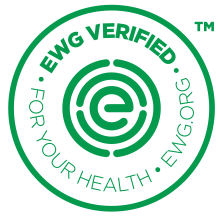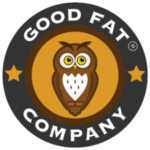The Good Fat team LOVES to talk about food! Here are a few recipes we like. Whether it’s the keto approach, whole-food lifestyles or benefits of specific nutritional compounds, healthful food is a hot topic and imperative to living “green”. But, what other variables play a role? What about personal care items we use on our body? Or the cleaning products we use daily in our homes?
In more recent years, organizations such as the Centers for Disease Control and Prevention (CDC) have begun to assess the impact from various adverse exposures as a whole, otherwise referred to “collective burden”. This collective dose has been a subjective topic within the scientific community.
Toxins are a result of man-made chemicals as well as naturally occurring. Repetitive low-dose exposure to these compounds over time is what we refer with the terms “toxic load” or “burden”. Substrates with toxicity can be found in consumer products, food and the environment in which we engage. Each of these represents areas to become keen on when assessing potential toxic load.
There is a supportive body of evidence for associations between toxin exposures and the onset of a whole host of chronic diseases from autoimmune related to cancers as well as other health-related impairments such as endocrine disruption*, fertility challenges or those related to mental and behavioral. Children, pregnant women, and older aged adults are significantly more sensitive and vulnerable to toxin exposure.
Personal care items, such as lotions, makeup, and hair care, contain various additives many of which are synthetic chemical compounds that few of us could accurately pronounce the names of. These compounds can be found in color and fragrance or included as preservatives.
While, home care items, such as cleaning products, also deserve attention. These products carry rather harsh hazard warnings, such as “Danger”, “Warning”, or “Caution”, for a reason. Unintentional poisoning is a primary reason. Yet, facets, such as quality of indoor air, is also important to consider with the average household cleaner.
The Environmental Working Group (EWG) maintains various consumer guides to help assess what is really in various products. While 100% avoidance is not a realistic goal, emphasis on reduction is.
A few considerations to support making transitions to better options include the following;
- Natural products may provide more bang for the buck. One thing that blows people away is that well formulated, low-toxin personal and home care products often require a lower amount for adequate application.
- Pay attention to the substrate when color is involved. Essentially, liquids involving color have a greater chance of causing harm, especially if applied to the skin. Therefore, paying attention to chemicals, particularly those relating to endocrine disruption*, and carcinogens in products such as gels and creams may take higher significance.
- Avoid synthetic scents. “Fragrance” is not well regulated in the U.S. and can consist of many proprietary chemical concoctions unclear to the end consumer. The frustrating thing is even with “good” options, it can be hard to avoid. A good habit is to check whether labels have the word “fragrance” OR if a natural, plant-based substrate, such as a specific essential oil, is indicated.
- Take a break. Find opportunities to avoid or reduce applications, for example, there are ways to reduce how often we wash hair with shampoo and conditioner which, as it turns out, often leads to better hair quality. Not only will making these reductions help lower the risk of cumulative low-dose exposures, it will save money over time.
- Remember internal health. Cellular health is impacted by food and water intake, physical activity, toxicity, and emotional health. Proper care for your internal systems through good nutrition and other lifestyle behaviors such as sleep and stress management will help support biochemical mechanisms such as effective detoxification.
*Chemical-based substrates that have been studied for the association to endocrine disruption include phthalates (a class of chemicals related to “fragrance”, softeners, solvents, and stabilizers in personal and household related products), parabens (used as preservatives), and phenoxyethanol. Endocrine disruptors refer to substrates that mimic or block hormone signals which, in addition to gland and organ health, have been studied for their role obesity.
Be healthy,
Ashley
Ashley runs a lifestyle health coaching service centered on evidence-based behavioral change and systematized approaches from integrative health services and healthcare. She includes functional health assessment tools that support setting more clear, realistic goals that are tailored to each client. She appreciates the products and mission of Good Fat Company due to the emphasis on whole-food, nutrition-rich products without processed additives or fillers. Also, that the product line is applicable across dietary spectrums from vegan to paleo and most anywhere in between. Further information can be found at www.ashleylarnold.com.


